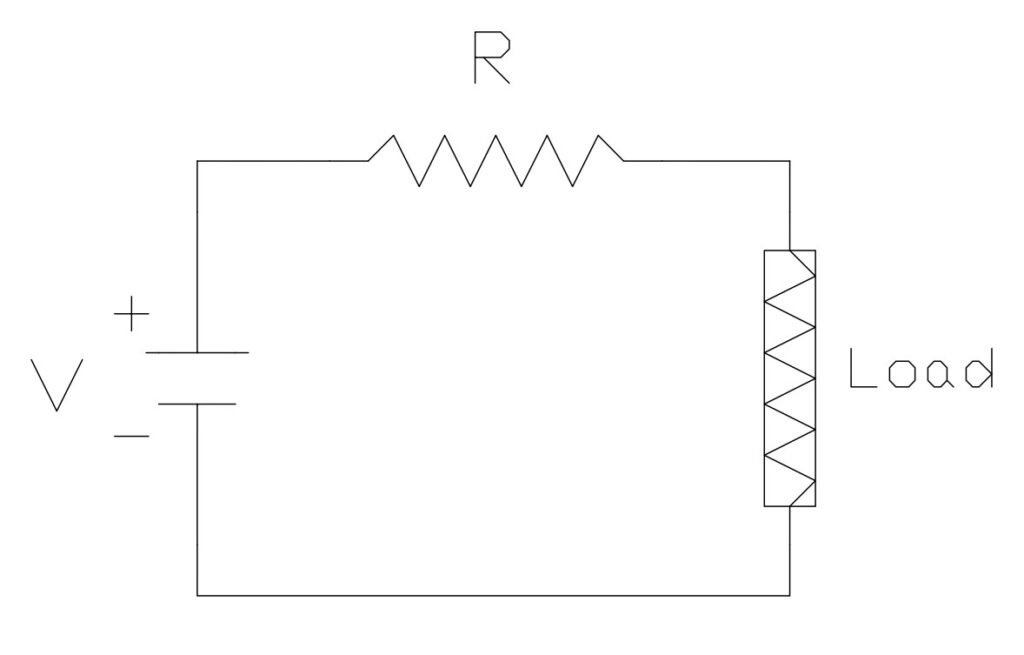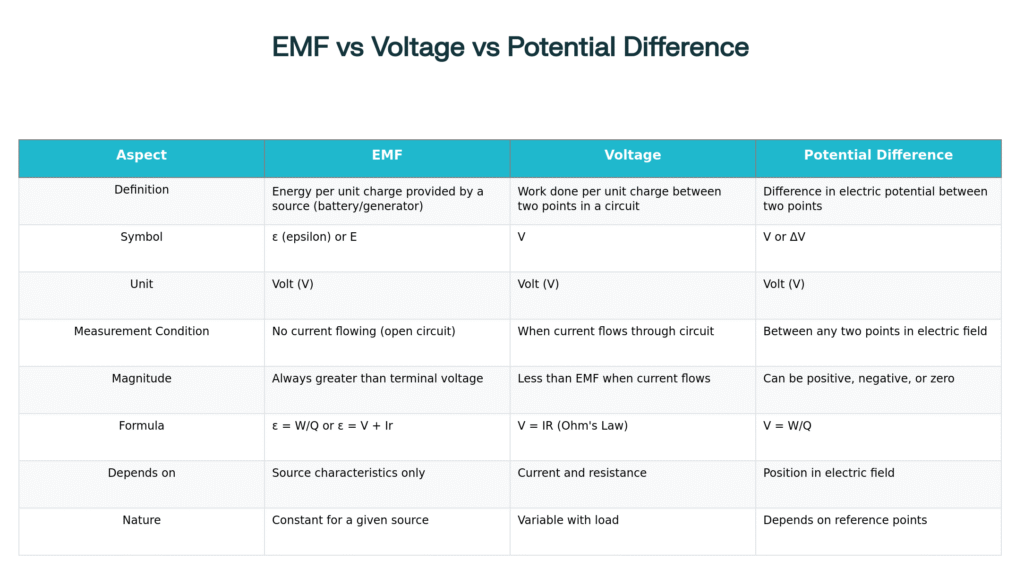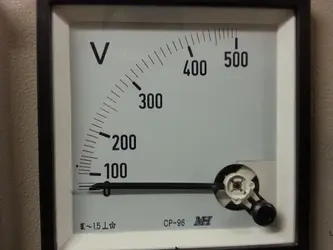The fundamental concepts of voltage, electromotive force (EMF), and potential difference is important for electrical engineering students. While these terms are often used interchangeably in casual conversation, they represent distinct physical phenomena with important practical differences. This blog post explains these concepts, their relationships through detailed explanations and numerical problems.

What is Voltage?
Voltage, also known as electric potential difference or electric pressure, represents the amount of electrical pressure that pushes charged electrons through a conducting loop. Voltage is fundamentally defined as the work done per unit charge to move a positive test charge from one point to another in an electric field.
The mathematical expression for voltage is:
\( V = \frac{W}{Q} \)
Where:
- \(V\) = voltage in volts
- \(W\) = work done in joules
- \(Q\) = charge in coulombs
Voltage can also be expressed using Ohm’s Law:
\( V = IR \)
Where I is current in amperes and R is resistance in ohms.
What is Electromotive Force (EMF)?
Electromotive Force (EMF) is the energy per unit electric charge imparted by an energy source such as a battery or generator. Despite its name containing “force,” EMF is not actually a physical force but rather a measure of energy supply or potential difference.
EMF represents the maximum potential difference that a source can provide when no current is flowing through the circuit. The key formula for EMF is:
\( \varepsilon = \frac{W}{Q} \)
Where \(\varepsilon\) (epsilon) represents EMF.
When current flows through a circuit, EMF relates to terminal voltage through:
\( \varepsilon = V + Ir \)
Where:
- \(\varepsilon\) = EMF in volts
- \(V\) = terminal voltage
- \(I\) = current
- \(r\) = internal resistance of the source
What is Potential Difference?
Potential difference is the difference in electric potential between two points in an electric field. It represents the work needed per unit charge to move a positive test charge from one point to another.
Potential difference can exist in both static electric fields (like in capacitors) and dynamic electromagnetic fields.
Key Differences Between EMF, Voltage, and Potential Difference

Measuring Voltage, EMF, and Potential Difference
Voltage Measurement

The primary instrument for measuring voltage is the voltmeter. It functions by connecting in parallel to the two points across which the voltage is to be determined. Modern digital multimeters often include a voltmeter function, along with capabilities to measure current and resistance.
When measuring voltage, select the appropriate range on the voltmeter to prevent damage to the instrument and ensure accurate readings.
EMF Measurement

To measure the electromotive force (EMF) of a source like a battery, we employ a potentiometer. This device compares the unknown EMF with a known reference voltage, allowing us to determine its value precisely.
Potentiometers are particularly useful when dealing with sources that have internal resistance, as they can measure the EMF without drawing significant current thereby avoiding voltage drops.
Numerical Problems and Solutions
Problem 1: A battery has EMF of 12V and internal resistance of 0.5Ω. Calculate terminal voltage when 2A current flows.
Solution:
Using \(V = EMF – Ir\)
\(V = 12 – (2 × 0.5) = 11V\)
Problem 2: Calculate the potential difference if 50J of work is done to move 10C of charge.
Solution:
Using \(V = W/Q\)
\(V = 50/10 = 5V\)
Problem 3: A cell with EMF 1.5V and internal resistance 0.2Ω supplies current to 4.8Ω external resistance. Find terminal voltage.
Solution:
First find current: \(I = EMF/(R+r) = 1.5/(4.8+0.2) = 0.3A\)
Then find terminal voltage: \(V = EMF – Ir = 1.5 – (0.3×0.2) = 1.44V\)
Problem 4: Calculate EMF of a cell if terminal voltage is 9V, current is 3A, and internal resistance is 0.1Ω.
Solution:
Using \(EMF = V + Ir\)
\(EMF = 9 + (3 × 0.1) = 9.3V\)
Problem 5: Find the work done in moving 5C charge through a potential difference of 20V.
Solution:
Using \(W = V × Q\)
\(W = 20 × 5 = 100J\)
Problem 6: A circuit has a resistance of \( 15 \Omega \) and a current of \( 0.5 A\) flowing through it. What is the voltage across the resistor?
Answer: Using Ohm’s Law: \( V = I \times R \)
\(V = 0.5 A \times 15 \Omega = \boxed{7.5 V} \)
Problem 7: A battery with an EMF of \( 12 V \) has an internal resistance of \( 0.2 \Omega\). When connected to a circuit, it delivers a current of \( 2 A \). What is the terminal voltage of the battery?
Answer: Using the formula: \(V = E – Ir \)
$$ V = 12 V – (2 A \times 0.2 \Omega) = \boxed{11.6 V} $$
Problem 8: A charge of \( 5 C \) is moved through a potential difference of \( 20 V \). How much work is done on the charge?
Answer: Using the formula: \( W = q \times V \)
\( W = 5 C \times 20 V = \boxed{100 J} \)
Problem 9: A point charge of \( 3 \times 10^{-6} C \) is located at a distance of \( 0.1 m \) from another point charge of \( -2 \times 10^{-6} C \). What is the electric potential at a point midway between the two charges? (Assume Coulomb’s constant, \(k = 9 \times 10^9 N m^2/C^2)\).
Answer: Electric potential due to each charge at the midpoint:
\( V_1 = \dfrac{k q_1}{r} \)
\(= \dfrac{(9 \times 10^9 N m^2/C^2)(3 \times 10^{-6} C)}{0.05 m} \)
\(= 540000 V \)
\( V_2 = \dfrac{k q_2}{r}\)
\(= \dfrac{(9 \times 10^9 N m^2/C^2)(-2 \times 10^{-6} C)}{0.05 m} \)
\(= -360000 V \)
Total electric potential at the midpoint:
\( V = V_1 + V_2 = 540000 V – 360000 V = \boxed{180000 V} \)
Problem 10: A circuit consists of two batteries connected in series. One battery has an EMF of \( 6 V \) and an internal resistance of \( 0.1 \Omega \), while the other has an EMF of \( 9 V \) and an internal resistance of \( 0.3 \Omega \). What is the total EMF and internal resistance of the combination?
Answer: Total EMF in series:
\(E_{total} = E_1 + E_2 = 6 V + 9 V = \boxed{15 V} \)
Total internal resistance in series:
\( r_{total} = r_1 + r_2 = 0.1 \Omega + 0.3 \Omega = \boxed{0.4 \Omega} \)
Frequently Asked Questions
EMF is the energy per unit charge provided by a source when no current flows, while voltage is the potential difference when current flows through a circuit.
EMF is greater because voltage drops due to internal resistance when current flows, following V = EMF – Ir
Yes, potential difference can exist in static electric fields without current flow, such as in capacitors.
As load increases, more current flows, causing greater voltage drop across internal resistance, reducing terminal voltage.
No, despite its name, EMF is not a force but represents energy per unit charge or potential difference.
EMF is measured using a high-impedance voltmeter across the source terminals when no current flows (open circuit).
Yes, EMF can be negative depending on the reference direction and the nature of the energy source.